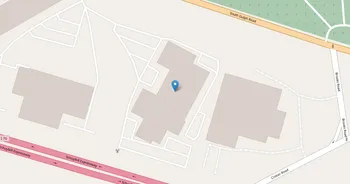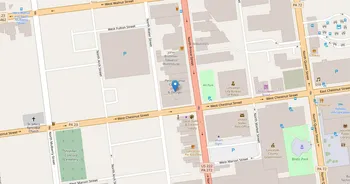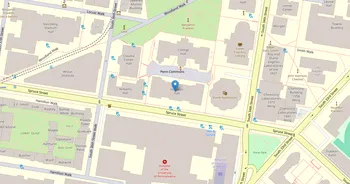Pennsylvania Academy of the Fine Arts (PAFA) : Overview, Courses, Scholarships & Rankings
About Pennsylvania Academy of the Fine Arts
Part art school and part public museum, the Pennsylvania Academy of the Fine Arts is known for blending studio rigor with daily contact to a renowned collection. Students dig into drawing, painting, sculpture, print and digital media with a steady rhythm of critiques and close mentorship. Facilities include light filled studios, galleries that double as classrooms, shops for making, a research library, and student services that cover advising, wellness, and career planning. And there are plenty of chances to show work in campus spaces.
Life here feels tight knit, hands on, and a little paint spattered in the best way. You'll find student run exhibitions, visiting artist talks, figure drawing marathons, and quick access to Philly's theaters, murals, and First Friday gallery nights. Career prep leans on internships with local arts organizations, portfolio reviews, and the museum's professional network. The academy's dual identity is its signature, along with traditions of learning directly from historic works. Notable alumni include Mary Cassatt, Henry Ossawa Tanner, and David Lynch.
Key Institutional Details
Contact & Profile
Academic & Institutional
Academic Programs & Fields of Study
Pennsylvania Academy of the Fine Arts (PAFA) offers 6 degree programs across 2 major academic fields, graduating approximately 55 students annually. The most popular fields by graduate volume are Arts (5 programs, 51 graduates) and Media Tech (1 programs, 4 graduates). Explore program details, award levels, and graduate demographics below.
Arts (5 programs, 51 graduates)
Fine Arts, Design Studies and Creative Performance
| Program Name | Graduates | Gender Distribution | Award Levels | CIP Code |
|---|---|---|---|---|
| Studio Arts, General | 25 |
|
Certificate (1-2 yrs)
Postbac Cert.
Master's
|
50.0702 |
| Illustration | 11 |
|
Bachelor's
|
50.0410 |
| Painting | 11 |
|
Bachelor's
|
50.0708 |
| Sculpture | 2 |
|
Bachelor's
|
50.0709 |
| Printmaking | 2 |
|
Bachelor's
|
50.0710 |
Media Tech (1 programs, 4 graduates)
Digital Media Technologies and Broadcasting Systems
| Program Name | Graduates | Gender Distribution | Award Levels | CIP Code |
|---|---|---|---|---|
| Animation and Interactive Technology | 4 |
|
Bachelor's
|
10.0304 |
Admission Requirements & Test Scores
Comprehensive overview of admission criteria, standardized test score ranges, and application requirements for prospective students at Pennsylvania Academy of the Fine Arts (PAFA).
Application Requirements
Data based on IPEDS for 2022-2023 academic year. Test score ranges represent the middle 50% of admitted students (25th-75th percentile). Requirements may vary by program.
Tuition, Fees & Estimated Costs
Overview of tuition rates, housing, and other annual education expenses for undergraduate and graduate students
Financial Aid & Student Support
Summary of scholarships, grants, student loans, and financial aid statistics for undergraduate students
Student Success Metrics
Graduation rates and post-graduation earnings to help assess student outcomes and long-term value of education.
Loan Burden & Repayment Outcomes
Breakdown of loan repayment rates and student debt levels by income and dependency status.
Frequently Asked Questions
Find answers to the most common questions about Pennsylvania Academy of the Fine Arts (PAFA)
How much does it cost to attend Pennsylvania Academy of the Fine Arts (PAFA)?
The annual tuition at Pennsylvania Academy of the Fine Arts (PAFA) is $44,600 for in-state students. When including room and board, books, and other expenses, the total estimated cost is approximately $71,438 for in-state students. Additional costs include room and board $18,662 and books and supplies $1,768.
Data based on IPEDS program completions for 2022-2023 academic year. Tuition and cost estimates are approximate and may not include all fees, personal expenses, or transportation costs.
What academic programs and degree levels does Pennsylvania Academy of the Fine Arts offer?
Pennsylvania Academy of the Fine Arts (PAFA) offers 6 academic programs across 2 major fields of study, with available degree levels: Certificate (1-2 yrs), Bachelor's, Postbac Cert., Master's.
Most popular program areas include:
- Fine Arts, Design Studies and Creative Performance (5 programs)
- Digital Media Technologies and Broadcasting Systems (1 programs)
Data based on IPEDS program completions for 2023-2024 academic year. Numbers reflect programs where students graduated, not all offered programs.
What is the acceptance rate for Pennsylvania Academy of the Fine Arts?
Pennsylvania Academy of the Fine Arts (PAFA) has an 87.5% acceptance rate and a 10.7% yield rate, making it moderately selective.
Admission statistics breakdown:
- Total applicants: 192
- Students admitted: 168
- Students enrolled: 18
Data based on IPEDS for 2022-2023 academic year. Admission statistics may vary by program and application cycle.
What financial aid and scholarships are available at Pennsylvania Academy of the Fine Arts?
Pennsylvania Academy of the Fine Arts (PAFA) provides financial aid to 17% of first-time, full-time students, with average grants of $18,987 and average loans of $13,446.
Average financial aid amounts by type:
- Pell grants: $5,057
- State/Local grants: $4,792
- Institutional grants: $16,590
- Federal loans: $5,250
The university supports 19 students with grants and 12 students with loans annually.
Data based on IPEDS for 2022-2023 academic year. Financial aid amounts and percentages may vary by program, enrollment status, and individual circumstances.
What is the average salary for Pennsylvania Academy of the Fine Arts graduates?
Pennsylvania Academy of the Fine Arts (PAFA) graduates earn a median salary of $24,229 after 6 years and $29,881 after 10 years.
The salary range 10 years after graduation spans from $11,449 (25th percentile) to $53,406 (75th percentile).
Data based on IPEDS for 2022-2023 academic year. Salary data reflects graduates who received federal financial aid (approximately 60% of all graduates). Actual earnings may vary significantly based on program, location, and individual circumstances.
Related Universities




Found something useful? Help others discover it too! Share with friends, on social media, or save for later - every share helps someone find the information they need.